Weekly Reader: The History of Yiddish Education
For many of us, learning Yiddish is a lifelong endeavor. Whether it’s truly your mame-loshn or, like me, you studied it as an adult, there’s always room for improvement. Fortunately, there are many resources that can help. Personally, my study of Yiddish consists mainly of reading, although I try to take advantage of conversation opportunities when I can. One of the most useful things, I’ve found, listening to the recordings in our Frances Brandt Online Yiddish Audio Library—hearing talks and lectures by the many erudite speakers featured in that collection is a great way to improve my comprehension and reinforce the vocabulary I’ve picked up from books. If you want something more structured, though, you can also take a class. Right now registration is open for the Bossie Dubowick YiddishSchool, a week of Yiddish-language learning happening April 7–12 here at the Center in Amherst. Designed for beginner and intermediate students, YiddishSchool includes over thirteen hours of language classes, catered meals, a musical performance, a film screening, and other cultural activities. To learn more about YiddishSchool, you can listen to this podcast episode with teacher Sonia Bloom and student Judith Liskin-Gasparro. And if you want to improve your Yiddish, there’s no better time than right now.
—Ezra Glinter, Senior Staff Writer and Editor
A New Text
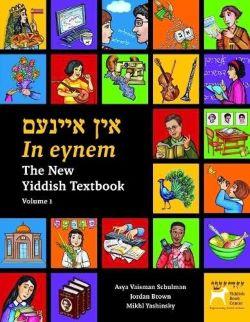
Learning a language usually means using a textbook, and Yiddish is no different. Over the years many such books have been produced, aimed at students of various ages and levels. In 2020, the Yiddish Book Center released its own revolutionary Yiddish textbook, In eynem, which received a Textbook Excellence Award from the Textbook and Academic Authors Association. In this podcast episode Asya Vaisman Schulman, director of the Yiddish Book Center’s Yiddish Language Institute, talks about the communicative approach to language learning, the role of the illustrated characters that are central to In eynem, and the companion website and multimedia resources that are part of the two-volume textbook.
Listen to a podcast episode with Asya Vaisman Schulman
Teach Yourself Chess
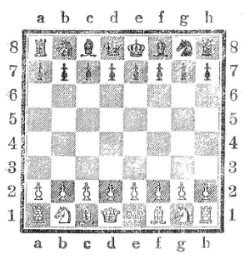
While Yiddish textbooks are usually textbooks about Yiddish, there have also been textbooks in Yiddish, about other subjects. One of the more interesting examples I came across was this book about chess, published in Warsaw in 1917.
Prolific Pedagogue
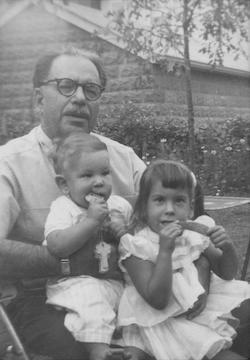
Solomon Simon was a prolific writer, educator, the author of more than thirty books, and a leading figure of the Sholem Aleichem Folk Institute, a Jewish cultural organization that operated Yiddish secular schools for children. Unlike many of his Yiddishist peers, however, Simon had a positive attitude toward religion. In an era when other Yiddish children’s writers tended to avoid the subject, his children’s stories depicted traditional religious life in positive ways. As part of the Yiddish Book Center’s Wexler Oral History Project, many of Solomon Simon’s descendants recalled their zeyde (grandfather) in their filmed oral history interviews.
Organizing Education
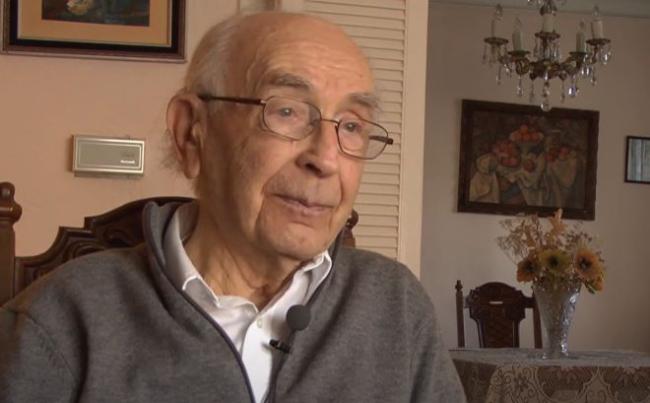
These days there are plenty of Yiddish-language classes you can take, including our own. But Yiddish pedagogy is hardly a new endeavor. The high point for Yiddish secular education was probably the Di Tsentrale Yidishe Shul-Organizatsye (Central Yiddish School Organization), or TSYSHO, which sought to create a network of secular Yiddish schools throughout interwar Poland. At its peak in the late 1920s, TSYSHO maintained 219 institutions with 24,000 students spread across 100 locations. These included 46 kindergartens, 114 elementary schools, 6 high schools, 52 evening schools, and a pedagogical institute in Vilna. Moshe Shklar, a Yiddish poet born in Poland, describes his memories of that interwar Jewish educational system.
Children's Library
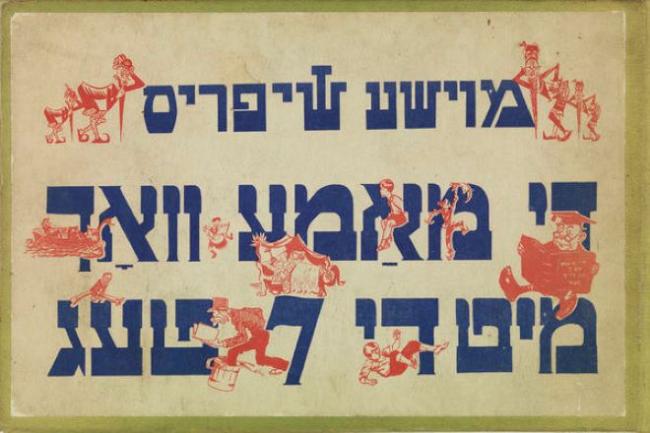
When we think of Yiddish educational materials, we often think of books for children, and for good reason. Children’s literature was a thriving subset of Yiddish publishing. Many major Yiddish writers tried their hands at children’s stories, as well as translating classic works by Hans Christian Andersen, Mark Twain, and Rudyard Kipling, among others. The Yiddish school movement produced primers, anthologies, abridged editions of classic Yiddish novels, and new works for children by leading Yiddish writers and educators. Many of the books were beautifully illustrated by important artists including Nota Koslowsky, Aaron Goodelman, and Zuni Maud. Our Noah Cotsen Library of Yiddish Children’s Literature gathers about 800 such titles, most of which are quite rare.
Visit the Noah Cotsen Library of Yiddish Children’s Literature
